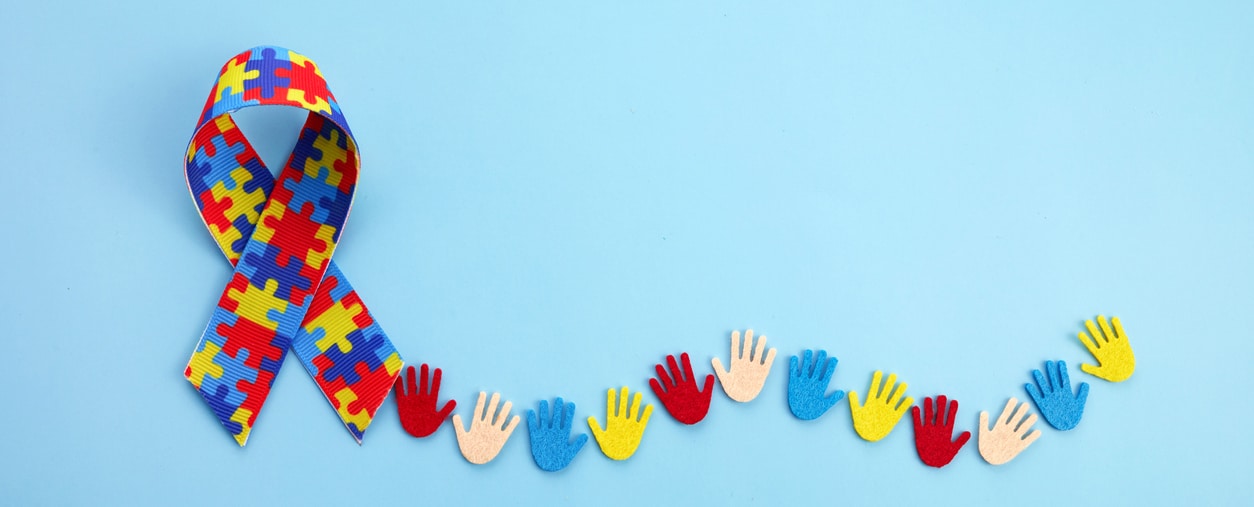If you’ve ever seen an autism awareness ribbon or pin, you likely saw a lot of different puzzle pieces. Experts now use the term Autism Spectrum Disorder (ASD) to describe this neurodevelopmental condition that presents different symptoms in different severities depending on each person. At Imagine Pediatric Therapy, we know that ASD is a puzzle for scientists to try and solve and that each ASD diagnosis is a little different, like puzzle pieces.
While all people with ASD brains develop in ways that impact their socialization and communication and cause repetitive patterns of behavior, the severity of those impacts and behaviors is variable, making the diagnostic spectrum much more appropriate than a singular approach.
The concept of autism as a psychiatric condition dates back to 1911, based on observing and analyzing a single patient. A century later, with a more refined sense of both psychiatry and brain physiology, the American Psychiatric Association shifted away from distinct diagnoses. Instead of using terms such as “autism”, “Asperger Syndrome,” and other developmental delay identifiers, the medical community moved toward the umbrella diagnosis of ASD. Not only is the umbrella term able to capture the variable nature of symptoms and severity, it accounts for the different ways we can care for people with ASD.
The idea of a spectrum helps doctors account for different presentations of atypical neurodevelopment, but it also helps everyone appreciate how different ASD can be for different patients. Some people may experience difficulty communicating with others because they struggle with processing contextual cues. Others may experience difficulty communicating or be largely non-verbal due to a more severe speech delay. Some children may find sensory stimulus, like flashing lights or loud sounds, merely unpleasant; others absolutely intolerable. Some people with ASD will be at higher intelligence levels than others. Some children with ASD may have a barely noticeable peculiar repetitive tic. others may be unable to stop a distinctive and robust repetitive behavior. Using the term “spectrum” is actually a more exact fit for a condition that impacts the same areas of the brain, but with varying results.
In addition to those symptoms that impact socialization, people with ASD also have a higher incidence of physical and mental conditions that compound the challenges for the person and their families. Children with ASD might have feeding issues, food sensitivities or allergies, and gastrointestinal problems. People with ASD are more likely to suffer from a wide range of mental health issues from anxiety and depression to ADHD to bipolar disorder. Again, the range of symptoms and severity is broad.
Remember that ASD is a puzzle. We know ASD causes atypical neurological development. But scientists are still not certain about why that atypical development manifests itself in so many different ways.
Until we can answer that question, Imagine Pediatric Therapy is prepared to care for children with ASD patients in as wide a variety of methods as each child requires. Because the root cause is the same, the vast majority of children will require some form of behavioral therapy, communication therapy, occupational and physical therapy, education therapy, and medication. Because the severity and presentation of ASD symptoms is variable, the kind of therapeutic interventions children require are also variable.
Wherever your child lands within the wide and broad spectrum of ASD, Imagine Pediatric Therapy can help. Contact us for an evaluation today.



